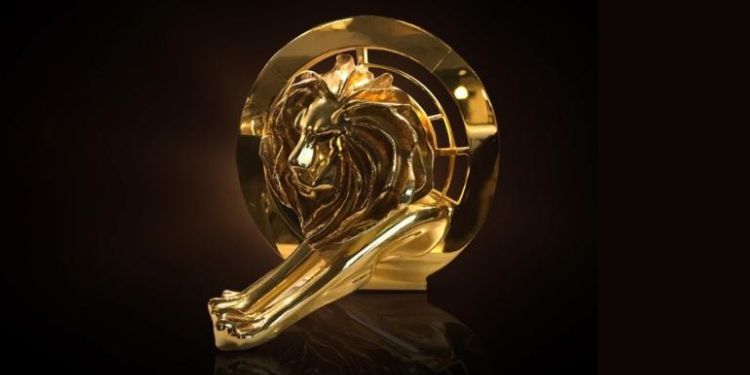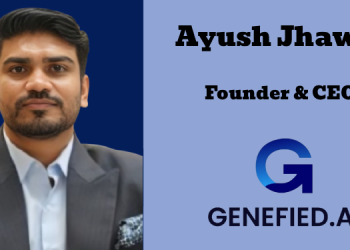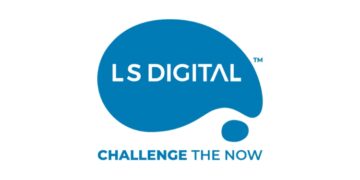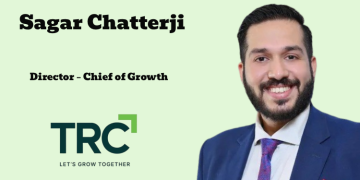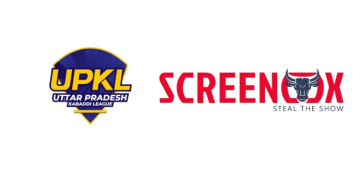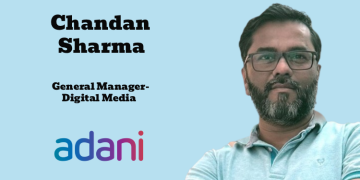The 70th edition of the International Festival of Creativity that draws advertising and marketing folks by the droves from across the world was hosted last week in picturesque Cannes in the South of France. The fest by the bay which inspired India’s own Goafest, has at its core the Cannes Lions, an advertising awards show that has grown to gargantuan proportions.
To date, it remains an aspiration for creatives young and old and an inspiration for practising adlanders of all hues. It is a stage on which success could give careers escape velocity, make agencies talent magnets, create independents-to-be-wooed for the networks and multiply a brand’s value manifold.
What explains adland’s obsession with the Cannes Lions? After all, there are other global awards, including some that were at some point considered more prestigious to win.
“I don’t think One Show or Clio have a nude beach attached. I think location plays a very important part for Cannes. Equidistant from Asia and America must have been a draw initially and set it up. Once you become popular for the externals and they descend on a place the atmosphere really takes centrestage. I guess the sheer numbers dictate the pull for Cannes. Let’s be honest. If people from all around the world get to see you on stage, you’d want that award na? That energy is an addiction,” explains Amer Jaleel, Former Chairman and CCO, MullenLowe Lintas Group.
Manish Bhatt, Founder Director, Scarecrow M&C Saatchi, concurs: “The Cannes fixation is about the place and the glamour. The Palais hosts everything from a dentist festival to a porn festival, from a feature film festival to the Lions advertising festival. The ad folk get to walk the same red carpet as Hollywood A-listers. For a first-timer, the beaches and scenery can seem like a trip to wonderland.”
“When it comes to the festival itself, the other big awards like D&AD and OneShow are just awards, not festivals. The fun elements and celebrations are drawn out at Cannes over many days of talks, awards, after parties and more. You may run into the very best minds in the world at the Gutter Bar. The winning moments are not celebrated at other awards as they are at Cannes. At the auditorium, you get to sit with the best in the world and judge their reaction to the work played on screen.”
“There was a time when a Pencil from D&AD or OneShow was seen as very distinct from a Cannes Lion. OneShow had very few categories; D&AD judged by British creative leaders was the most coveted ever. There were very few categories, each award had its character. While they scaled, built categories and added hundreds of jurors, they lost some of their intrinsic personality traits that made them unique. Meanwhile, Cannes Lions more or less remained what it was and built on it further,” he adds.

Mandeep Malhotra, Chief Growth Strategist, Shrishti Media & Investments, underlines that the obsession with winning a Cannes Lion is not restricted to India.
He explains, “I have been working in North America a little bit these days and oh my, isn’t that a huge obsession there too! I remember my days at DDB and Ogilvy when global teams would share their work well in advance within the circles to increase likeability and visibility. I equate it to Grammys or Oscars for our industry. To me, Piyush is to advertising what AR Rahman is to music.”
‘To win here is a big deal’
Josy Paul, Chairman and CCO, BBDO India, who served on the Creative Strategy Lions jury this year, underlines that Cannes Lions’ long history of celebrating the greatest ads is what makes it special.
He explains, “Cannes Lions is widely considered the most prestigious creative festival in the world for marketing communication. To win here is a big deal. It is the ultimate recognition and affirmation of your ideas in the eyes of your peers. The difference between Cannes Lions and the Oscar is that most work at Cannes Lion is a response to a specific client brief – be it an opportunity or challenge. Though these days it’s also about the initiative taken by the creators that has made a difference.”
While there are other premier award shows of equally high standards, they have historically been perceived to be catering to their country or continent of origin, notes Nima Namchu, independent creative consultant. Cannes Lions, on the other hand, stands out as the truly international award show thanks to a diverse jury and participation of agencies from around the globe, he observes.
“Winning at Cannes is international news, and winning big there is perhaps the quickest way of letting the international marketing fraternity know that your agency is the King of the Creativity Mountain. And no matter how much some clients might scoff at the mention of advertising awards, when they go shopping for new creative partners, they are always impressed by the number of trophies on an agency’s shelf,” says Namchu.
The increase in marketer interest is something Arun Iyer, Founding Partner, Spring Marketing Capital, also points to as a trend.
He says, “People work hard to ensure they get a shot at winning at Cannes Lions. Network agencies hold periodic meetings to monitor their readiness for the festival. The one trend I have seen change is that marketers also seem very keen to get their shot at fame at the festival.”
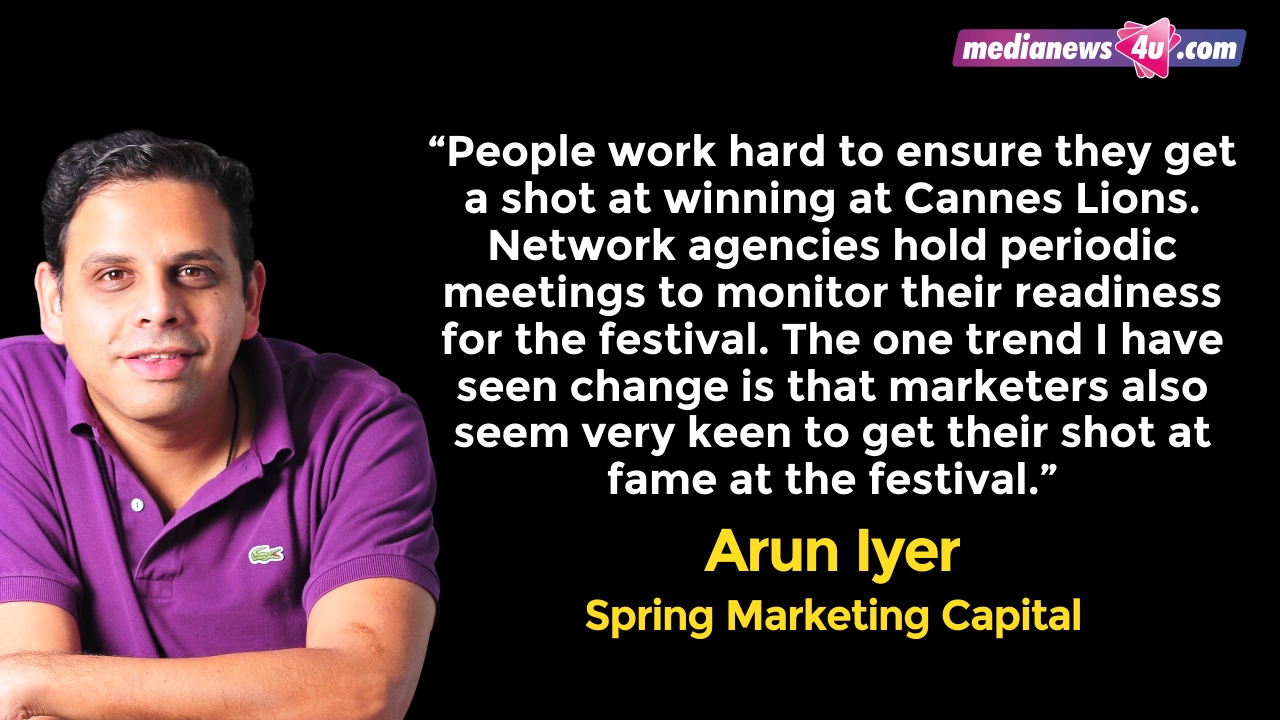
‘Lion gets you a top job; helps agency attract talent to replace you’
Nirmalya Sen, Founder and CEO, The Rethink Company, sums it up when he says the reason the world obsesses over winning at Cannes is ‘recognition and the growth resulting from it’ — for the creative leadership of the agency, the agency itself and for their clients.
He elaborates, “A Lion is how you get that top job at your next agency. It is also how your current agency attracts top talent to replace you. For the agency, Lions are symbols of accomplishment and can add fuel to agency culture. They’re also symbols of shared wins with clients, which could result in stronger, longer relationships.”

“Many clients today curate their own ‘portfolios’ and see it as a ticket to a better job. A Lion in the mix only makes it bigger. In fact, one of the smarter things Cannes Lions have done is to make the award show more client-friendly. And getting them to go head-to-head to prove who is a more award-friendly client.”
Malhotra notes that while career graphs of creatives can change with a Lion, the recognition not only reinstates pride and joy, but also that ‘innate satisfaction of being able to achieve something’.
“As far as agencies are concerned, some of them have it as their annual target to achieve Cannes as written KPI’s. I call it ‘Objectifying in the art of subjectifying’. There is pride at the C-suite personal showcase in the swanky rooms. I don’t think it really adds much to business wins, but surely helps retain the client for the next couple of years (the frequent agency shifting clients… or the ‘creative joy acceptable’ type of clients),” he quips.
BBDO’s Paul adds, “Winning at Cannes Lions is known to launch careers. It’s universal currency that one can use to negotiate deals, personal or as an agency. It means fame and fortune. More importantly it’s about reputation, and that holds tremendous value. Most often that’s priceless.”

Iyer notes that the festival has positioned itself as the Mecca of advertising creativity. “And I guess it also accelerates careers if one were to win regularly. For the network agency folks, it gets you noticed internally, and it is also a platform for independent agencies to get seen by the networks.”
With all eyes on the action at the French Riviera, a win gets you overnight fame, notes Namchu.
“Suddenly, everyone — from peers to head-hunters — know you by name. And depending on the colour of the Lion one returns home with, winners can expect to be rewarded with new designations, and raises to suit the new business cards. But the most valuable reward a Cannes Lion gets creatives is the power to make people in the conference rooms less resistant to their ideas. Similarly, for agencies, it serves as a magnet — for business and talent. Good ROI, no?” he reasons.
There is also the view that the stature of a Lion is not the same today. Bhatt recalls that when at his (then) agency the team won a OneShow merit certificate, they all went to see it — the team wanted to touch it. Now, it’s about how many awards and how many Golds one wins, he notes. His point being that when things were less, there was more shine.
“When you talk of network agencies especially, a Lion or an award on the global stage can be the path to another elevation or a shift. Networks also need to play the number game. But even there, today with social media and the web there are other ways to get your work famous, to popularise your work, and be appreciated.”
“You probably miss Cannes during the week when it happens when there is a lot of noise. But it doesn’t matter afterwards. All said and done, a Cannes Lion is a good force, a robust motivational tool for younger people,” adds Bhatt.
‘The trip is the reward’
Jaleel points out that for most young creatives, the trip to Cannes is an award in itself.
“You have to be doing exceedingly well to be chosen to go to Cannes. Either that or you’ve worked desperately hard and the agency is rewarding you. So whether you win or not, just by going to Cannes you’ve pocketed a trophy. How bad can that be?”
“For agencies, it’s the cheapest reputation enhancer available today. You don’t have to work hard or extremely strategically or anything like that. So, many agencies take on random projects, random brands, just for a crack at Cannes. One such thing you do which is fresh enough or crafted nicely and you’ve got yourself into seven to eight categories. Isn’t that easy? All around you have hard working brands and objectives and targets and you have hard nosed clients breathing down your neck for performance. And suddenly you have welcome relief and a chance to be dubbed Asia’s hottest agency?” he poses.
“Nowadays there’s also another kind of reward. A grateful client who’s driven you up the wall through the year and achieved targets will throw you a carrot in the form of a shot at Cannes. ‘Chal tu iss par try maar, laga toh dono jaayenge, Cannes’,” says Jaleel.
What adds to the lure is that the probability of winning is much greater than before, contends the former Lintas hand, given hundreds of categories and subcategories.
House divided on ‘Patli Gali’
Paul, who judged this year, emphasises that a lot more transformational breakthrough work is winning a Lion. He refers to categories like Creative Strategy, Creative Effectiveness, Creative Data, Creative B2B, Creative Commerce, Business Transformation and others that make sure it’s an award for business impact at scale.
“It calls for greater client relationships and partnerships with diverse talent. This year it was all about that. Not just brands with a point of view but brands with a point of ‘do’,” adds Paul.
There is a problem with the juggernaut of made-for-awards work, asserts Rethink’s Sen.
“As agencies, we exist to serve brands that have been placed in our care. To nurture them with creativity and to help them grow. And award shows are recognition for agencies (and with them, their clients) for doing so better than other agencies that year. It is natural for any of us to crave that recognition. But, the problem begins when the goal of the agency and its creative leadership is to win awards. For then there is a propensity to start making decisions based on what you believe juries will like, not based on what will help your brand accomplish its business objectives or enhance its strength as a brand. Awards need to be an outcome of meeting a brand’s objectives, not the objective itself.”
The house is clearly divided on this — as it has been for ages. Namchu, who was CCO at Havas counters his former CEO Sen: “If the sole objective of an idea is to win an award and nothing else, it usually dies an early death. But if it serves to amplify the brand’s message and help the business, I see no reason why a potentially award-winning idea will not be accepted by clients.”
“An idea might come from the agency, but it is executed in collaboration with the client. Why should anyone resist it when a really good one comes along?” he poses.

Spring’s Iyer succinctly reiterates that with marketers also keen to win at a stage like the Cannes Lions, brands are pretty open to the idea of creating work that stands a chance to win.
‘Purpose’ — the new Patli Gali?
“Work has been made for awards for as long as awards have been popular. After years of it being accepted as the norm, the industry woke up to it and started classifying made-for-awards work as ‘scam’. Scam never saw the actual light of day. Scam never sold any products. Scam didn’t shift consumer thinking or behaviour. Scam didn’t help brands grow. Or make the world a better place. Scam was just that. Scam. Even if it was toasted over Rosé in the South of France,” asserts Sen.
While in the last few years one has seen a clampdown on scam, that does not mean we don’t have made-for-awards work, he opines.
“In fact, we have a lot of it. Today, it happens under the guise of ‘purpose’ (not to be confused with Brand Purpose). Except the purpose it serves most often is not the brand’s, but of the agency and the client behind the work.”
“There is no denying the ideas, the use of technology, the craft in the work that wins are great. It is just that a lot of this work does not emanate from a brief or a real marketing or brand objective. It is designed to move juries, not the needle as far as the brand’s growth is concerned,” he contends.
Scarecrow M&C Saatchi’s Bhatt goes back a few years to offer a different perspective on how work-for-awards may have been accentuated.
“When we had just print, TV, OOH, we placed the creative on the medium and the work spoke for itself. Judges saw the creative and evaluated it. When tech and cross-medium innovation and integration kicked in, and as categories like PR and media arrived at creative awards, there was a need to build context in the entries. It all started innocently, as it always does. But once the format was understood, people started building the case through the entry rather than presenting it,” he explains.
As case studies came in, one saw social issues and entries striking a ‘journalistic’ tone, with art galleries fighting causes and so on in the last decade and a half, is his submission.
“Some amount of left thinking that the liberal creative lot would buy started getting more prominent. Between network agencies, there is also an unsaid judging room chemistry on some of the work,” says Bhatt. The last point warrants another story altogether.
We also asked if made-for-awards work is more accepted today, even as a symbol of an agency’s capability.
Jaleel reiterates, “Look, made-for-awards work is a reality since ages. We used to call it patli gali, and everyone of us has done it and justified it in some way. As for capability, it is not even an indication, far less a symbol of capability. How can you even present random award wins as success for your agency I can never understand, and worse, how can clients accept this on face value?”

“I’ll say put aside all the award wins of an agency or individual, take that out of consideration. Now evaluate who you’re hiring on the rest of the work!” he adds.
Malhotra cedes that ‘Made for awards’ is easily accepted by brands today. After all, they don’t end up spending on the work, he notes. A win is a good reason for the bottles of Rose in Cannes. And often a fat bonus for the marketing head back home, he adds.
He surmises, “Having said what I said, the joy in winning a Lion… Those congratulations at the Gutter Bar full of envy and tease and those invites to parties by the beach… that joy is unparalleled. Having reached the stage at Cannes a few times for the work done by my teams is one of the reasons I am still around the glitterati world of advertising.”

(First published by The Free Press Journal BrandSutra. Content powered by MediaNews4u.com. Feedback: [email protected])

